Mammilaria / mammilaria
Refers to the family of cacti. Fatherland is South America.
General description: The popularity of mammilia is explained by its compactness and ease of flowering, even at a young age. Flowers are small, but numerous. In addition, mammilia form beautiful fruit. All mammilia have spiral rows of papillae, of which spines grow, but flowers appear in the sinuses between the papillae.
A wide variety of species and forms, the most common:
- Mammilaria bocasana (Mammilaria bokasana) - owns a silver elongated, strongly branching stem. Spring blossoms with small snow-white flowers, located along the circumference of the stem.
- Mammilaria hahniana (Mammillaria of Ghana) - owns a spherical or cylindrical stem, pink flowers.
- Mammilaria longimamma (Mammillaria long-puffed) - differs in long and thick papillae and impressive yellow flowers.
- Mammilaria spinosissima (Mammilia prickly). She has very sharp spines and pubescence between the papillae.
Recommendations for caring for the plant Mammilaria:
Illumination : Photophilous, preferring southern windows. In the shading does not need.
Irrigation regime : In summer, moderate, by the measure of the filled drying of the earth, in winter it is very outlandish, if the temperature is above 15 ° C, do not water at all in a humid and cool atmosphere.
Humidity of air : Periodic spraying from a fine spray can be useful. I love fresh air, we need airing places. For the summer it is better to place on a fresh atmosphere (in the park or on the balcony).
Temperature regime : Moderate in the warm season. In winter, the optimum is 7-10 ° C, for wintering mammillaria winter minimum 15 ° C.
Soil : Drainage is mandatory. You can add charcoal and brick chips.
Recommended soil mix: 1 share of turf, 1 share of leaf land, 1 share of peat land, 1 share of sand.
During the growth period, it needs fertilizing once every two weeks with fertilizers for cacti and succulents.
Breeding : Children, seeds (shoot at 20-25 ° C).
Transplantation : In the spring, young plants annually, mature once a couple of years. In order to give room for numerous children, the pots are chosen large and shallow.
Pests: Most often it is affected by scarlet spider mites (in dry air, leaves and stems are braided with cobwebs).
With a slight infection, the plant is allowed to help finish with a soap solution and a warm wash. In case of severe damage, spraying with an insecticide solution is recommended.
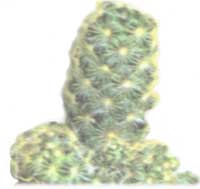
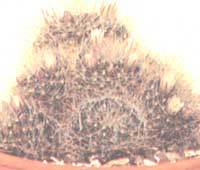
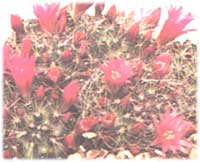
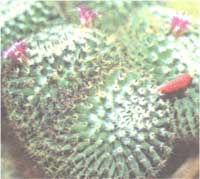
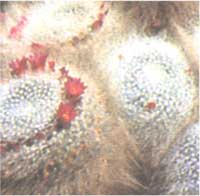
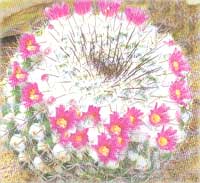
Mammilia elongata
Mammilaria bocasana
Mammilyaria vilda - mammilaria wildii
Mammilaria zeilmanniana
Excellent mammilaria - mammilaria perbella
Mammilaria hahniana
Mammilia prickly - mammilaria spinosissima


Comments
Commenting on, remember that the content and tone of your message can hurt the feelings of real people, show respect and tolerance to your interlocutors even if you do not share their opinion, your behavior in the conditions of freedom of expression and anonymity provided by the Internet, changes Not only virtual, but also the real world. All comments are hidden from the index, spam is controlled.